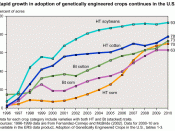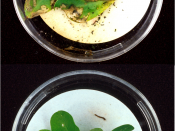Strategic Marketing, MKT 501
Module #2 - Case Assignment
"Recent Biotech Innovation is a Little Fishy"
"Night Pearls" are not worn around the neck of the wealthy and famous and they are not a new appetizer at Red Lobster. These new little gems were stumbled upon by H.J. Tsai who is a professor of Fisheries Science at National Taiwan University. While working with genetically modified fish for medical research, Tsai isolated a gene from naturally glowing jellyfish, extracted it, and inserted it into the DNA of zebra fish. To Tsai's surprise, the jellyfish gene made zebra fish glow!
These new little beauties caught the eye of Taikong, a worldwide supplier of fish food and equipment. Professor Tsai agreed to share his genetic expertise with Taikong in exchange for research funding. Taikong's president, Willis Fang, was immediately drawn to the hypnotic appeal and immediately believed the charm of the little green glow in the dark fish would just turn into "true greenbacks" for his company.
This genetic engineering represents "one of the first leisure-time applications for genetic engineering"; however, many dispute that statement. Humans have been genetically modifying animals for hundreds of years by selectively breeding them for our benefit - for instance, cows with better milk production and how could we not consider the selective breeding of race horses so they can run the fastest quarter-mile? Other examples of genetic engineer are mice (engineered to resist diabetes) and Salmon (engineered to grow at a rapid rate for faster harvesting). While the mice are not a threat to grace our dinner tables, the salmon is likely to be the first to be commercially developed for human consumption (if approved by the FDA).
While transgenic animals contribute to human welfare by benefiting advancements in the agricultural, medical and industrial...


